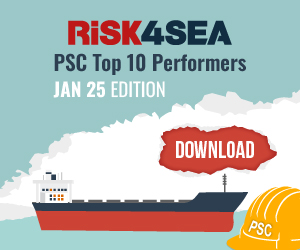A recent study by International Councli on Clean Transportation (ICCT) estimates emissions of nitrogen oxides (NOx) from ships operating in Danish waters between the North Sea and the Baltic Sea in 2019.
As explained, in total, 615 measurements from 545 unique ships were obtained using exhaust gas sampling devices (sniffers) attached to helicopters that were flown into the exhaust plumes of ships as they sailed. The data include measurements from ships covering all engine tiers, although ships with Tier III engines were only required to comply with Tier II limits in the Baltic in 2019.
Across all vessel types and engine tiers, the data show the greatest mean NOX emission rates at main engine loads below 25% with mean emissions of 12 g/kWh. Emission rates decrease as main engine loads increase, with mean emission rates of 8.1 g/kWh at loads greater than 75%. Existing NOX test cycles assume that marine engines most often operate at higher engine loads; however, our research shows that engines typically operate at lower engine loads.
As informed, reducing NOX emissions could alleviate the health burdens associated with the shipping industry. Globally, in 2020, there were up to an estimated 266,000 premature deaths from lung cancer and cardiovascular disease caused by ship-source air pollution accounting for the combined impacts of NOX, sulfur oxides (SOx ), and particulate matter and accounting for the impacts of the global sulfur rule that reduced the maximum allowable sulfur content of marine fuels from 3.5% to 0.50% in 2020.
The results of this study suggest the need to address and control NOX emission rates at low load operation (<25%). Rather than relying solely on weighted emission limits, the IMO could consider implementing NTE standards for new and existing ships, particularly focusing on operations at low loads, and including a test point below a 25% load (e.g., 10%). This would result in more complete emissions profiles for ships, especially during low load operations where we observed emission rates higher than would be expected by the regulations.

































































